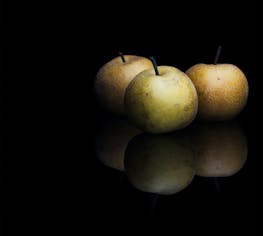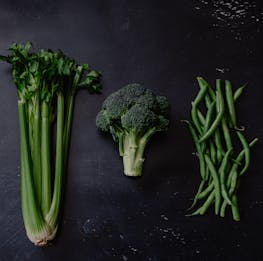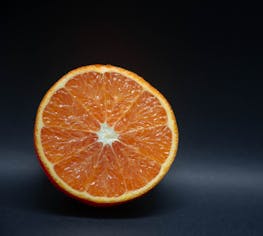How Not to Diet Summary
The Groundbreaking Science of Healthy, Permanent Weight Loss
Dieting can be confusing. Every day the dieting industry tells us that there's a better, more efficient way to lose weight.
How Not to Diet might just be the last book you need to read on the subject. Dr. Greger provides scientific data and cutting-edge research on safely losing weight and body fat. This accessible and unintimidating guide, gives an abundance of tips, advice, and easy-to-follow suggestions that can be put into practice immediately.
The dieting landscape offers us many seemingly "fast and easy" options, and these fad diets come and go. Whether it's Keto, Mediterranean, Banting, or Paleo, there's a tirade of conflicting information out there, and they all purport to be the very best method. So, for anyone wanting to lose weight, this confusion, plus the unlimited options out there promising to be "the perfect diet," can be incredibly frustrating, and may prove to be an obstacle in getting started.
Weight loss is a multibillion-dollar industry, guilty of puffed-up promises, misleading data, and pseudoscience. Most adherents to these programs gain the weight back; some even end up putting on more weight in the end. The sector also relies heavily on anecdotal evidence to win over customers, and frequently uses a handful of people's grandiose claims of a particular diet's life-changing benefits.
Our diets are paramount to our overall health, but we often gravitate towards the end result, instead of the process itself. This approach can have harmful effects. Many diets are incredibly unhealthy. When choosing something as life-or-death as what you put in your mouth, we need the most accurate evidence possible.
Enter Dr. Greger. Physician, public speaker, acclaimed author, and whole-food enthusiast, Dr. Michael Greger has scoured the medical literature to develop a proven weight loss guide. Backed up by almost 5,000 references, he's distilled his advice into a diet that's both sustainable and healthful.
In this summary, you'll briefly learn how to hack your diet to shed excess pounds. By adopting a scientific approach, and learning from historical evidence, Dr. Greger gives us a solid plan that emphasizes a lifestyle change rather than a quick fix.
The Obesity Epidemic
Incredibly, we're now ten times fatter than we were, compared to just 100 years ago. Furthermore, since the 70s, obesity has skyrocketed in developed nations, and it shows no signs of slowing down. We need to know what's behind this phenomenon, because obesity isn't a willpower failure. It's just our bodies doing what they were designed to do.
The human body evolved to survive in the wild, and we're experts at doing that. Long ago, food was scarce, so we learned to store any excess food as fat to survive the leaner months. Food scarcity also gave us a natural inclination for high-calorie foods, because our food source was unreliable. Hence, we evolved to prefer foods that gave us the most calories in the simplest form.
Nowadays, we're still experts at packing on extra padding, but what's changed significantly is our environment, and fattening foods are ubiquitous.
The food industry has profited from our biological cravings for decades. The 70s were a watershed decade. This was the decade, where obesity rates suddenly took off. The reason for this becomes apparent when one takes a glance at the typical 70s grocery store food aisle. At this time, the food industry was making great strides in manufacturing. Technological advances such as deep-freezing, made mass-production of cheap, ready-made-meals possible. The TV dinner was born, and suddenly, treat foods became everyday foods, readily available anytime, and anywhere.
Processing food strips down its fiber and nutritional value. What's more, food manufacturers often add hidden sugars and oils. The end product is, what the author terms CRAP foods. CRAP foods are calorie-rich and processed, and because of the availability and convenience of these foods, we eat an average of 500 extra calories per day, without even trying.
Obesity is a health crisis, and has been termed an epidemic. It reduces life expectancy, and causes debilitating diseases such as arthritis and diabetes. So, solving the obesity problem may save more lives than curing cancer.
All of us should opt for a more healthy and sustainable diet. So, if you're looking for a diet with a weight loss guarantee, then you're in luck. Also, there's not an anecdote in sight, just plain science.
Dr. Greger provides all of the ingredients for an ideal weight loss diet. He takes through the extensive scientific literature, which shows us that a whole-food plant-based diet, or WTPB for short, is the optimal weight loss solution.
Get Plenty of Fiber
Admittedly, it's tough to make fiber sexy. But, it's the secret weapon when it comes to shedding the flab.
Fiber is satiating, because it adds volume to our food, without the extra calories. Furthermore, it's a good food group because we typically take longer to eat high-fiber foods, and therefore, get fuller faster. When we increase the rate of feeling full, this cuts the calories that we consume overall. For example, to get the same calories as you'd get in a glass of apple juice, you'd have to eat five cups of chopped apple. It's easy enough to gulp the juice down, but good luck chomping your way through all that apple, because of the volume, and length of time it would take you to get through.
There's another critical element to fiber, and that's that it traps the calories in food. Plant fibers have a tough outer layer, and no matter how hard you chew, this layer is difficult to digest. Hence, your colon can't access all the calories. So, by walling off your calories, about 100 calories can pass through your colon and be excreted, with zero effort on your part.
Our gut's microbiome plays a part, too - our gut flora feasts on the fiber that we eat. In return, short-chain fatty acids are released into our systems, which reduces our appetite, and boosts our metabolism. A 2017 study found that these acids made high-calorie foods such as donuts seem less appetizing, even up to 12 hours after a meal.
The sad truth is that fewer than 5% of Americans meet the minimum daily fiber recommendations. The recommendation is that we need to up our plant intake because these are high fiber foods. So add root vegetables such as sweet potatoes, and legumes such as lentils, chickpeas, and black beans to your grocery cart every time you go shopping.
Pick Low GI Foods
Low GI isn't just another food fad. If you're opting for weight loss and general health, you should eat a selection of low GI foods. High GI foods, such as white bread, cause a spike in blood sugar after eating. You may have noticed how white bread tastes sweet after you eat it. This taste is because our bodies digest processed foods quickly, and they turn to sugar.
From a weight-loss perspective, high GI foods lead to cravings. In one study, children who ate oats for breakfast ate considerably less at a lunch buffet later on the same day. Meanwhile, those children who ate sugary cereal such as Froot Loops, ate much more at the buffet. The science behind it is that low GI foods give you a slow release of energy, which can curb your hunger levels, and stop you from overeating.
The other benefit of eating low GI foods is that they can help conquer the dreaded weight loss plateau. Those of us who have tried shedding pounds before, may know that our bodies respond to fat loss by slowing down our metabolism.
So, swap out those typical white starches, such as white rice, white bread, and cornflakes, for slow-release, low GI foods such as whole grains and legumes.
Get Rid of Excess Fat and Sugar
You may have heard the saying, 'fat equals fat.' The idea is that to shed fat; it's a good idea to take it off your plate. If you want to lose weight, the ideal way to do this is by following a diet that's low in fats like butter and oil.
This advice contradicts low-carb and keto diets, which villainize carbs. Keto followers blame sugary carbs for the rise in obesity. The truth is, both sugar and fat are to blame. And as it's name suggests, fat is, well, fattening.
Fat has a high caloric density, and just one tablespoon of salad dressing, for example, packs a whopping 120 calories. Since it's already in fat form, our bodies find it much easier to convert it into body fat. On the other hand, if you look at carbohydrates, our bodies have to convert these to body fat, which burns calories.
Fat is everywhere, and it's getting more prolific. Animal agriculture has selectively bred animals to carry excess fat, so today's meat is far fattier than it was. In previous decades just 10% of our calories came from fat. Nowadays, one serving of so-called extra-lean mince almost triples that. A study by Dr. Dean Ornish found that those who reduced their fat intake by 6% on a WFPB diet lost an average of 24 lbs.
To lose weight, the recommendation is to cut down, or even eliminate the meat you eat. It's also best to avoid cooking with oil or butter. Instead, try using broth or wine as cooking liquid for extra flavor.
That's only half of the equation, though. In order to lose weight, you also have to cut out sugar too. As with fat, sneaky added sugars are everywhere. It's little wonder that the sugar we consume has surged by twelve times, compared to what we ate 200 years ago.
And sure, sugar can taste great, but it has zero nutritional value, and our bodies don't need it at all. Excess sugar adds more calories, encourages weight gain, and it also makes us eat more. A study showed that kids who ate high-sugar cereals, such as Coco Pops, gobbled down 77% more than children who went for the low-sugar option.
So in terms of fat and sugar it's best to try and cut down as much as possible. Sugar should only account for 5% of your daily calories, and don't worry about cravings, because your tastebuds will change to adapt to having less sugar in your diet.
Go For Low-Calorie Density
When you look at a typical meal, the majority of your plate should contain low-calorie dense foods. One of the best things about a whole-food, plant-based diet is that you don't have to restrict your portions. You can enjoy unlimited quantities of food, as long as they have a low-calorie density.
Low-calorie density foods typically have a high water content. So non-starchy vegetables, which are almost 90% water and fruit, which is about 80%, are good choices. As individuals we tend to eat roughly the same volume of food every day, and stretch receptors in our stomachs tell us when we're full. Therefore it's important to fill ourselves up with low-calorie density foods so that we don't compensate for our hunger with high-calorie foods.
There are a lot of plant foods that are virtually impossible to overeat on. The secret is to swap out fats and sugars, which have loads of calories, for fruit and non-starchy vegetables, which are full of air and water. So when it comes to foods such as zucchini, celery, apples, and pears, you really can eat as much as you'd like.
Add Legumes
Legumes are a wonder food. Did you know that, Hispanic Americans have a lower risk of cancer and heart disease, even though the demographic is typically in the lower economic range? One popular theory is that this is down to their legume-rich diet.
Legumes fall somewhere between a vegetable and a protein, they're nutritionally diverse, and they're also packed with protein, iron, zinc, potassium, and, the all-important, fiber.
When it comes to weight loss, legumes are much better than meat, and they're also highly satiating. In one study, chickpeas went head-to-head with bread and butter. The chickpea eaters ate 300 fewer calories at their next meal, than those who ate bread. In another study, researchers gave some people fava bean patties, and the other group pork patties, and once again the legume eaters were less hungry later on.
That's why beans, lentils, and chickpeas are vital to the weight loss equation. If you've got time, boil them on the stove, or just take a few tins off the shelf for a very convenient meal.
Strategies to Boost Your Weight Loss
Many diets fail because of motivation and accountability. While this book offers loads of great suggestions about what foods we should be eating, and how we should be eating them, it also offers advice on how to optimize weight loss.
It's easy to stick to the basics, but we often lose momentum over time, especially if we're at the stage where we're trying to shed the stubborn fat that's leftover. So Dr. Greger provides some additional hacks that may help to make our weight loss journey that much easier.
Recruit an Accountability Buddy
We're often told that there are secrets to weight-loss. And while there may not be any secrets, per se, keeping accountability is key to successful weight loss. The suggestion is to create a support network or community, and by having a support structure, your weight loss is much more likely to succeed. There are many ways to do this such as weight-loss group, group therapy, or getting advice from a health coach.
If group work isn't your thing, then the important message is to stay accountable to yourself. One study found that those who weighed themselves once a week consistently lost weight. Dr. Greger even recommends weighing yourself twice a day for optimum weight loss.
Front-Load Your Calories
You've heard the old adage, 'Eat breakfast like a king, eat lunch like a prince, and eat dinner like a pauper.' It turns out, this is absolutely true, and we should all be front-loading our calories at the beginning of each day.
Researchers found that an optimal caloric distribution throughout the day is 700 calories for breakfast, 500 for lunch, and 200 calories for dinner. Those who followed this method lost twice as much weight as those who ate a high-calorie evening meal. This weight-loss method is down to our chronobiology, because our bodies use more energy to digest meals in the morning than in the evening. Hence, by eating more at breakfast, you consume less overall. So, use your body clock to your advantage by enjoying a hearty breakfast, and eating less throughout the day.
Drink More Water
We've all been told that we should drink about eight cups of water a day. However, there are conflicting studies on how water actually affects weight loss. Nonetheless, after reviewing all the science, Dr. Greger recommends drinking plenty of water every day. It's particularly important to swap out calorie-laden sugary drinks for water, and this practice alone will eliminate about 235 calories a day.
Research also shows that well-hydrated people burn fat more quickly, and they produce less angiotensin, which can lead to weight gain. It's also important to note that everyone's water needs are different, so let your urine guide you; aim for a light yellow color, and you're on the right track.
Don't Neglect Sleep
Sleep is one of the cornerstones of effective weight-loss. Get to bed at a reasonable time because one of the things that happen when we're tired is that we tend to eat more, and make poor dietary choices. Late evening snacking can lead to an excess of about 700 calories a day, and at this time of day we're more susceptible to the addictive callings of sugary and fatty foods. As with drinking water, sleeping itself seems to assist weight loss, and those who sleep less tend to burn more muscle than fat, even when in a caloric deficit.
Preload With "Negative Calorie" Foods
Do you know how many calories an apple has? Surprisingly, if you eat it before a meal, it could have negative calories. Preloading our meals by starting with a salad, veggie soup, or fruit, means that we will eat less during the meal. Research shows that people who eat an apple or drink two glasses of water before a meal feel fuller and eat less overall. This sounds crazy, but try adding a low-calorie course as a precursor to your meal; you could end up eating less overall.
In Conclusion
This book might just be the kickstart that you need to lose weight and lead a healthier life. According to popular belief, there are loads of ways that we can get there; we can drink powdered shakes, eat half a grapefruit with every meal, or chain ourselves to the treadmill. However, many of these options are downright dangerous and will probably result in an initial weight loss, followed by a bigger weight gain. The truth is that the most effective, scientifically proven, and healthy is the whole-foods plant-based diet. So, if you're looking for a sustainable approach to weight loss, without compromising your health, then minimize the consumption of animal products, and reduce or eliminate CRAP foods.
Not only does this book give a comprehensive look at what foods we should be eating, and how to support a healthy lifestyle, but it also offers some great hacks. We're told about the powers of vinegar, why we need to chew our food more, and be more mindful when eating. Studies show you'll get fuller faster.
The success of the WFPB diet is its abundance. There's no limit to how much you can eat, and there's no need to count calories, or to restrict your portions. Instead, you can enjoy unlimited vegetables, fruit, legumes, whole grains, spice, and herbs. And, while you may think this is limiting, you'll find that there's even more variety that comes with an open mind about these foods. After all, they're the foods our bodies were designed to eat.




